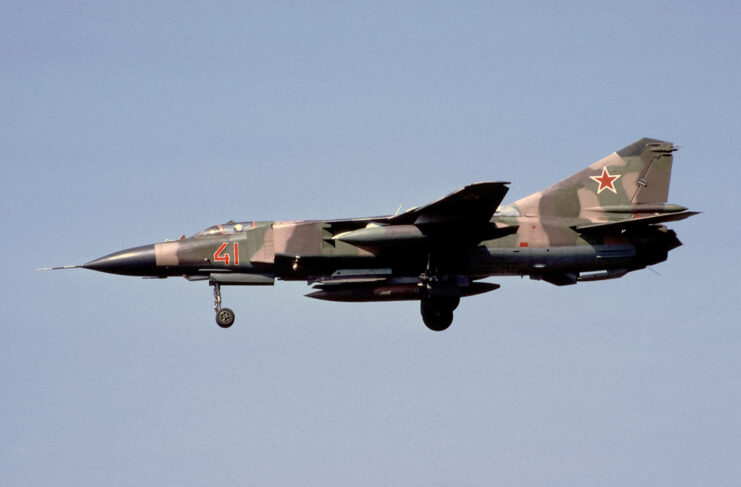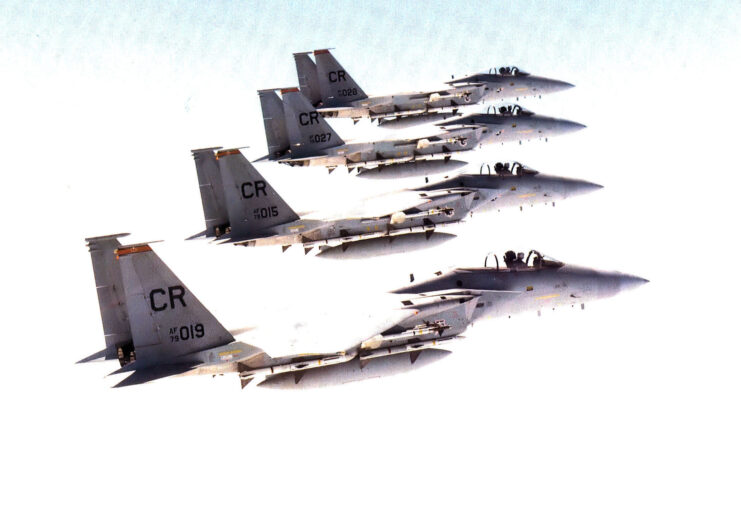In July 1989, a routine training flight turned into a fatal incident when a Soviet Air Force Mikoyan-Gurevich MiG-23M “Flogger” suffered issues with its engine. Despite the pilot ejecting, the aircraft remained in the air, flying across Europe into Belgium. The unmanned MiG-23M eventually ran out of fuel, leading it to crash into a farm, killing a young man at the start of his adult life.
A routine training flight leads to a pilot ejecting from his MiG-23M

On July 4, 1989, Col. Nikolai Skuridin, just back from a much-needed vacation, was preparing to take off on a routine intercept training mission over the Baltic Sea. The plan was for him to leave from Bagicz Airbase, near Kołobrzeg, Poland – and, at first, it appeared as though things were going to go according to plan.
Taking off from Runway 23, Skuridin, having reached an altitude of 150 meters, raised his landing gear. It was at this point that the MiG-23M he was piloting experienced an unexpected issue: the failure of the engine’s afterburner.
Seeing smoke emanating from the back of the aircraft and noticing a significant loss of power, Skuridin radioed that he was going to eject from the MiG-23M, which had begun to descend. After receiving confirmation, he successfully ejected from the jet.
Leaving Polish airspace

After Col. Nikolai Skuridin ejected, the MiG-23M, significantly lightened without the pilot or the ejection seat, pitched up and rose into the air at its takeoff speed of 170 knots, as its engine was still, somehow, running. It subsequently left Polish airspace, crossing into East Germany, then, the West. It was then that the aircraft garnered the attention of the US Air Forces in Europe.
Concerned the jet could have hostile intentions, two McDonnell Douglas F-15 Eagles from the 32nd Tactical Fighter Squadron, based out of Soesterberg Air Base in the Netherlands, took off on an interception mission.
As it was only traveling at a slow 400 knots and there were no signs of any nuclear weapons onboard, the decision was made for the two aircraft to allow the MiG-23M to continue its unmanned flight over Europe, with the hope being it would crash into the English Channel.
The F-15s continued to follow the Soviet jet as it crossed into Dutch and Belgian airspace.
Crashing into a Belgian farm

While they’d initially decided not to shoot down the rogue MiG-23M, the American aircraft became worried the jet would crash into the French city of Lille and thus opted to take it out over the North Sea. However, it soon became apparent that the jet was running low on fuel, prompting the French Air Force to be put on alert, as the MiG-23M made a slow turn to the south.
After flying between 560-600 miles, the Soviet jet crashed into a farm at 273 Doorniksesteenweg, in the Belgian town of Bellegem. Unfortunately, 19-year-old informatics student Wim Delaere, who’d been sleeping in the house alone after celebrating the end of his university exams, was killed in the accident.
No one else was there at the time, as his father was working in Ypres and his other family members were out running errands.
Political aftermath of the MiG-23M farm crash

Following the incident, TASS, the Russian News Agency, released a statement, which read, “Today in one of the aviation units of the Northern Troop Group a Soviet military pilot was forced to eject from his MiG-23 while carrying out a training flight over Polish territory because of a malfunction of the aircraft’s technical system. The pilot is alive. The plane continued its unmanned flight in a westerly direction and fell on Belgian territory.
“The Soviet side is in the process of contacting the states through whose airspace the plane flew.”
General Secretary of the Communist Party of the Soviet Union Mikhail Gorbachev told the media that he was “sorry about what happened,” while Belgian Foreign Minister Mark Eyskens expressed concern over how long it took for Soviet officials to inform Belgium of the aircraft and if it had been equipped with nuclear weapons.
More from us: TRIGON: The CIA Spy Who Funneled Soviet Secrets to the United States
After discussions, an agreement was made, in which the USSR promised to pay Belgium $685,000 in compensation. Not long after, the fatal MiG-23M farm crash was largely forgotten in history.
